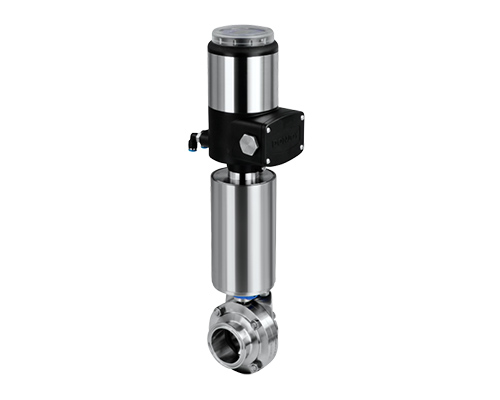Butterfly valves are among the most versatile and widely used flow control devices in industrial and commercial systems. Among them, the regulating butterfly valve stands out as a precision tool for managing fluid flow with efficiency and reliability. In this article, we’ll explore how these valves work, their applications, and why they’re indispensable in modern engineering.
What Is a Regulating Butterfly Valve?
A regulating butterfly valve is a quarter-turn rotary valve designed to modulate or control the flow of liquids, gases, or slurries. Its name comes from the disc-shaped component (the "butterfly") that rotates within the pipe to adjust the flow rate. Unlike simple on/off valves, regulating butterfly valves are engineered to provide fine-tuned flow control, making them ideal for systems requiring precise adjustments.
How Does It Work?
The valve’s operation hinges on its rotating disc, which is mounted on a central shaft. When the disc is parallel to the flow, the valve is fully open; rotating it 90 degrees closes the valve completely. For regulation, the disc is positioned at intermediate angles to achieve the desired flow rate. Key components include:
-
Disc: The flow-control element (often made of stainless steel or composite materials).
-
Seat: A resilient ring that ensures a tight seal when closed.
-
Actuator: Manual, pneumatic, electric, or hydraulic mechanisms to rotate the disc.
Regulating butterfly valves often feature linear or equal percentage flow characteristics, allowing engineers to match valve performance to system requirements.

Types of Regulating Butterfly Valves
-
Concentric (Resilient Seat):
The simplest design, with the disc centered in the pipe. Ideal for low-pressure applications like water treatment or HVAC systems. -
Double Eccentric (High-Performance):
The disc is offset from the pipe’s centerline, reducing wear and enabling use in higher-pressure or high-temperature environments (e.g., steam systems). -
Triple Eccentric (Metal-Seated):
Designed for extreme conditions (e.g., oil refineries or chemical plants), these valves feature a conical disc seal for zero leakage and long-term durability.
Applications Across Industries
Regulating butterfly valves are workhorses in countless sectors:
-
Water & Wastewater Treatment: Adjusting flow in pumps, pipelines, and filtration systems.
-
HVAC: Balancing air and water flow in heating/cooling systems.
-
Oil & Gas: Managing corrosive fluids and high-pressure pipelines.
-
Pharmaceuticals: Ensuring sterile, precise fluid handling.
-
Power Generation: Controlling cooling water or steam in turbines.
Advantages Over Other Valves
Why choose a regulating butterfly valve?
-
Compact & Lightweight: Takes up less space than gate or globe valves.
-
Cost-Effective: Lower manufacturing and maintenance costs.
-
Quick Operation: A 90-degree turn enables rapid adjustments.
-
Low Pressure Drop: Minimal flow resistance when fully open.
Maintenance Tips
To maximize lifespan:
-
Regularly inspect the seat and disc for wear.
-
Lubricate the stem and actuator components.
-
Test for leaks during shutdowns.
-
Replace seals if hardening or cracking occurs.
The Future of Flow Control
With advancements in materials and smart technology, modern regulating butterfly valves now integrate IoT sensors and automated controls. These "smart valves" enable remote monitoring and predictive maintenance, revolutionizing industries like energy and manufacturing.
Conclusion
Regulating butterfly valves may not grab headlines, but their role in ensuring efficient, safe, and precise flow control is irreplaceable. From clean water to renewable energy systems, these valves quietly power the infrastructure of modern life. Next time you turn on a faucet or adjust your thermostat, remember the humble butterfly valve working behind the scenes!
Interested in optimizing your flow systems? Consult donjoy today to see if regulating butterfly valves are the right fit for your application!


